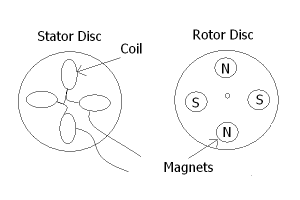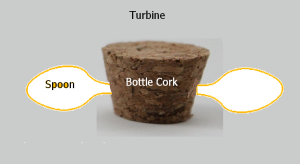You could easily build a hydroelectric power generator to produce energy that may reduce your electric bills or it could be an alternate source of energy. Build a big enough power generator and you could totally eliminate your electric bills.
Building your own hydroelectric power generator and producing electricity would be best for you if you have a naturally flowing stream nearby. People have used this method to produce large amounts of energy commercially for a long time. Hydroelectricity and wind powered generators are clean and renewable sources of energy and could help you reduce dependency on conventional sources of energy.
The basics of hydropower
Basically our micro-hydro power generator will convert kinetic energy from a flowing stream into electricity or alternate current. This energy can be used to power homes or businesses. It could be even used to store energy in batteries or recharge batteries to be used as needed. On a small scale, a river or stream can be used to turn one or more turbines. On larger scale, hydroelectric dams are used to produce large amounts of current that turn bigger turbines.
The electricity produced this way basically comes from an electromagnetic field. Then transformers are used to produce high voltage and then supply the voltage to homes. You need a smooth flow of water to generate electricity from turning turbines.
To build your own power generator, you just need some basic knowledge of electricity, some hand tools and some commonly available supplies from your local hardware store. This system uses a runoff stream to generate energy and it’s not difficult to build.
Video Credit: Tobias Fiirgaard
The construction
Below we will describe the construction of a micro hydroelectric generator system . You will have to work on this system and experiment with it to figure out what works best for you. Good luck!
1. Preparing rotor and stator disks
The hydroelectric power generator that we are about to build will have two parts. You must make two disks first. Use templates and a cardboard.
The rotor: Rotor is the moving part. It contains powerful magnets. When the magnets turn, it will produce electricity in the coils through the electromagnetic field.
The stator: Stator is the stationary part. It is equipped with coils and wires to collect and supply electricity.
You need cardboard and two templates for the rotor and stator disks. Cut the two templates containing the rotor and stator scheme and attach to the front and back of the cardboard. After that, make a 1 cm hole in the center.
2. Attaching the stator
You have to make 4 coils that will be attached to the cardboard. To make the coils take an oval shaped piece of cardboard and start winding wire around it. Make 200 turns with a copper wire to make this coil. Attach these coils on your stator disc. They have to be alternate in direction of winding, clockwise and counter-clockwise. so if you wind the first coil clockwise, the next one should be wound counter-clockwise. Connect the ends of each coil and use tape to insulate them.
3. Making the rotor and turbine
Attach 4 strong magnets to the stator disc. The magnets should be arranged on the disk with alternate polarity. Next take a cork and 8 plastic spoons. The handle of the spoon should be shortened to 1 cm. Insert the handles of the spoon into the cork to form a rotor. Make a hole in the center of your cork and insert a shaft for rotation.
4. Generator body
Take a container or plastic bucket and attach the rotor to a plastic bottle. Attach the rotor, stator and turbine. At the center of the tank, make a 6mm hole and fix the stator with its coils. Then, attach on the same shaft the turbine and rotor. Make sure that the spoons are facing the neck of the bottle and the magnets should be close to the coils.
 Your hydroelectric generator is ready. All it needs now is to get some water to flow through your system and watch it turn. You can use a multimeter to see if you get electricity flowing. Electricity produced here can be collected and used to power your appliances and devices.
Your hydroelectric generator is ready. All it needs now is to get some water to flow through your system and watch it turn. You can use a multimeter to see if you get electricity flowing. Electricity produced here can be collected and used to power your appliances and devices.
Did you find this article helpful? Learn more about Environmental Professionals Network.
Learn more about generating power at home. Read our blogs regularly and you will learn more about clean reusable sources. For a specific question, please add your comments below.
We would also appreciate your feedback so please put down your thoughts about this article on our Facebook page or in the comment box below.
Source: Environmental Professionals Network
Related articles and Resources:
- Reusable Energy Sources -Environmental And Economic Issues | Environmental Professionals Network
- Homemade Hydro Power System
- How To Build A 5 Gallon Bucket Hydroelectric Generator | Home Design, Garden & Architecture Blog Magazine
- Hydroelectric Generator: How to Build a Small One – The Green Optimistic





